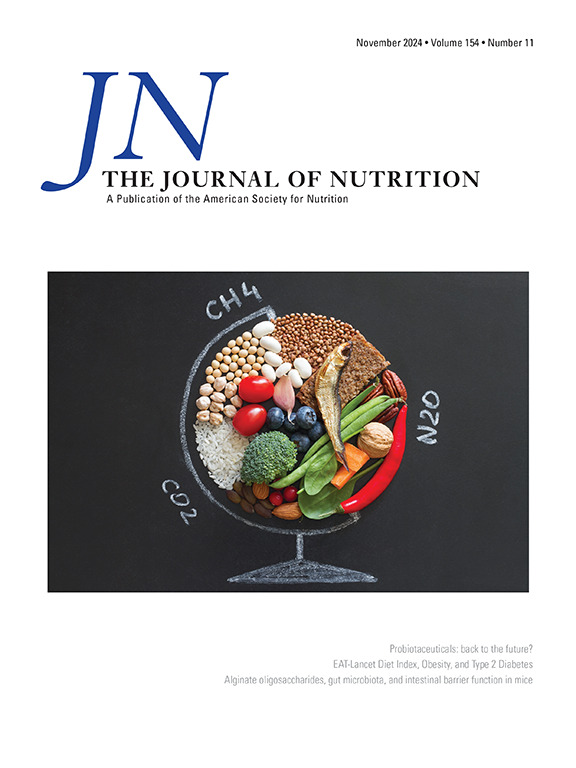根据2015-2018年全国健康与营养检查调查,目前乳制品对儿童和成人能量和营养摄入的贡献。
IF 3.7
3区 医学
Q2 NUTRITION & DIETETICS
引用次数: 0
摘要
背景:美国人膳食指南(DGA)建议每天摄入2-3份乳制品,但大多数美国人的摄入量较少。多种因素会影响乳制品的摄入量,包括性别、年龄、种族和收入。目的:确定美国按种族/民族分层的乳制品的热量和营养贡献,以评估有关乳制品建议的信息是否应针对不同人群进行定制。方法:使用2015-2018年国家健康与营养调查(NHANES) (N= 14851)数据,按年龄和种族/民族分层计算乳制品和乳制品对营养不足和公共卫生关注营养素的贡献。人口比率法用于确定乳制品对热量和营养的贡献百分比。结果:牛奶是乳制品组维生素D和钾的主要来源,而奶酪是儿童和成人钙的主要来源。非西班牙裔黑人儿童和成人从乳制品中摄取的营养物质都较少,而非西班牙裔亚裔儿童从乳制品中摄取的营养物质比成人多。结论:鉴于乳制品摄入量的差异,研究结果表明,需要共同努力,针对不同种族/民族的不同亚群体,制定有针对性的具体信息,以促进乳制品摄入量。本文章由计算机程序翻译,如有差异,请以英文原文为准。
Current Contribution to Energy and Nutrient Intake from Dairy Foods in Children and Adults Using NHANES, 2015–2018
Background
The Dietary Guidelines for Americans recommends 2–3 servings of dairy a day, but most of the American population consumes less. Multiple factors can influence the intake of dairy including sex, age, ethnicity, and income.
Objectives
This study aims to determine the calorie and nutrient contribution of dairy foods stratified by race/ethnicity in the United States to assess if messages regarding dairy recommendations should be tailored to different populations.
Methods
National Health and Nutrition Examination Survey 2015–2018 (N = 14,851) data were used to calculate the contribution of dairy and dairy products to underconsumed nutrients and nutrients of public health concern stratified by age and race/ethnicity. The population ratio method was used to determine the percentage of contribution of dairy foods to calories and nutrients.
Results
Milk was the top source of vitamin D and potassium from the dairy group, whereas cheese was the top source of calcium in children and adults. Both non-Hispanic Black children and adults consumed fewer nutrients from dairy, whereas non-Hispanic Asian children consumed more nutrients from dairy compared with their adult counterparts.
Conclusions
Given the disparity in dairy intake, results suggest that concerted efforts are needed to develop targeted specific messages to different subgroups based on race/ethnicity to promote dairy intake.
求助全文
通过发布文献求助,成功后即可免费获取论文全文。
去求助
来源期刊

Journal of Nutrition
医学-营养学
CiteScore
7.60
自引率
4.80%
发文量
260
审稿时长
39 days
期刊介绍:
The Journal of Nutrition (JN/J Nutr) publishes peer-reviewed original research papers covering all aspects of experimental nutrition in humans and other animal species; special articles such as reviews and biographies of prominent nutrition scientists; and issues, opinions, and commentaries on controversial issues in nutrition. Supplements are frequently published to provide extended discussion of topics of special interest.
 求助内容:
求助内容: 应助结果提醒方式:
应助结果提醒方式:


